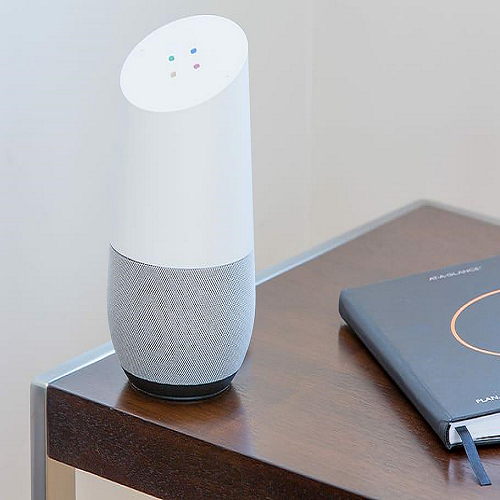Smart Home Tips & Tricks
Google Home just keeps getting better and smarter with each release and update. It can now talk to many other devices, such as your TV, to make your life easier and more connected. For instance, you can learn how to use Google Home on tv to do a number of awesome things such as browsing the weather and playing videos off the internet.
How do you connect Google Home to your Tv, and what are some of the things you can do with the two paired?
Using Google Home on Tv- How to Add Your Tv To Google Home
You probably already use Google Home for typical voice assistant tasks like controlling lighting, checking the weather, playing music on Spotify, etc. However, this is just a tip of the iceberg as far as Google, and smart home applications are concerned. Did you know that you can add your tv to Google Home and control it with voice commands? Here is how:
You will need
-
A smart Tv with inbuilt Chromecast or with a configured Chromecast dongle connected to it
-
A Google Home speaker- Google Home Mini, Google Home hub/max or any third-party Google Home speaker with Google assistant
-
Google Home app
-
An active WIFI connection
This guide assumes that you have already done the initial setup on your Google Home speaker through the Google Home app. You should, therefore, be able to issue typical commands and view devices and rooms added to your home network on the app.
Step One- Connecting the Devices
Turn on your smart tv or Chromecast and ensure they are connected to WIFI. Also, make sure that your Google Home speaker is powered on and connected to the same WIFI network as your tv.
Step Two- Google Home App
Launch your Google Home app on your smartphone or tablet and ensure that the device is also connected to the same WIFI network as the other devices. You will use the app to add your Tv or Chromecast to Google Home as a device.
You should be able to see other devices that you may have paired with Google Home before, such as your smart lighting fixtures, smart doorbell, etc.
Tap on the accordion icon on the top of the app- also known as the menu icon- for older versions of the Google Home app and go to settings. For the latest version of the Google Home app (which you should be having by now), the settings icon should be visible on the home screen on the second row of icons at the top.
Tap on “more settings” in the settings menu and find a tab labeled service. From here, you can see an option labeled “TVs and Speakers.” Select it and tap on the “+” icon to add your tv to Google Home. Google home will try to discover new devices on the WIFI network and list them. Your tv or Chromecast device should be one of them
Select your TV from the list of discovered devices and follow the setup wizard to add it to Google Home.
As an additional but important step, you should assign a unique name for your tv so that it’s easier to issue voice commands. Locate the TV and speaker icon or list of devices on the app’s home screen. Tap on the options icon next to the tv you just added (three dots). Locate the name field and enter a unique name for your tv such as “Bedroom TV” or “main tv.”
By setting a custom name to your TV or Chromecast device, you can add more than one TV to your Google Home network and issue commands to each independently. For instance, you can say something like, “Hey Google, play thriller on living room tv” or ‘Hey Google turn on my bedroom tv.”
How to Use Google Home on Tv: Issuing Commands
With your tv set up on Google home, you can now start issuing voice commands via Google Home for anything you want. Some of the apps you can control with Google Home on your TV include:
-
YouTube- say, “OK Google, play -video/channel name” on my living room tv.”
-
Netflix- Just say the show name and Netflix. You can also pause and stop Netflix with voice commands
-
Hulu
-
Spotify
Native commands- if your TV supports HDMI-CEC (most modern TVs do), you can use Google Home to turn your tv on and off.
Connecting your TV to Google Home opens up a world of convenience and possibilities. You will no longer have to reach for your remote, especially if your hands are occupied. Just issue a voice command and voila! It works like magic.
